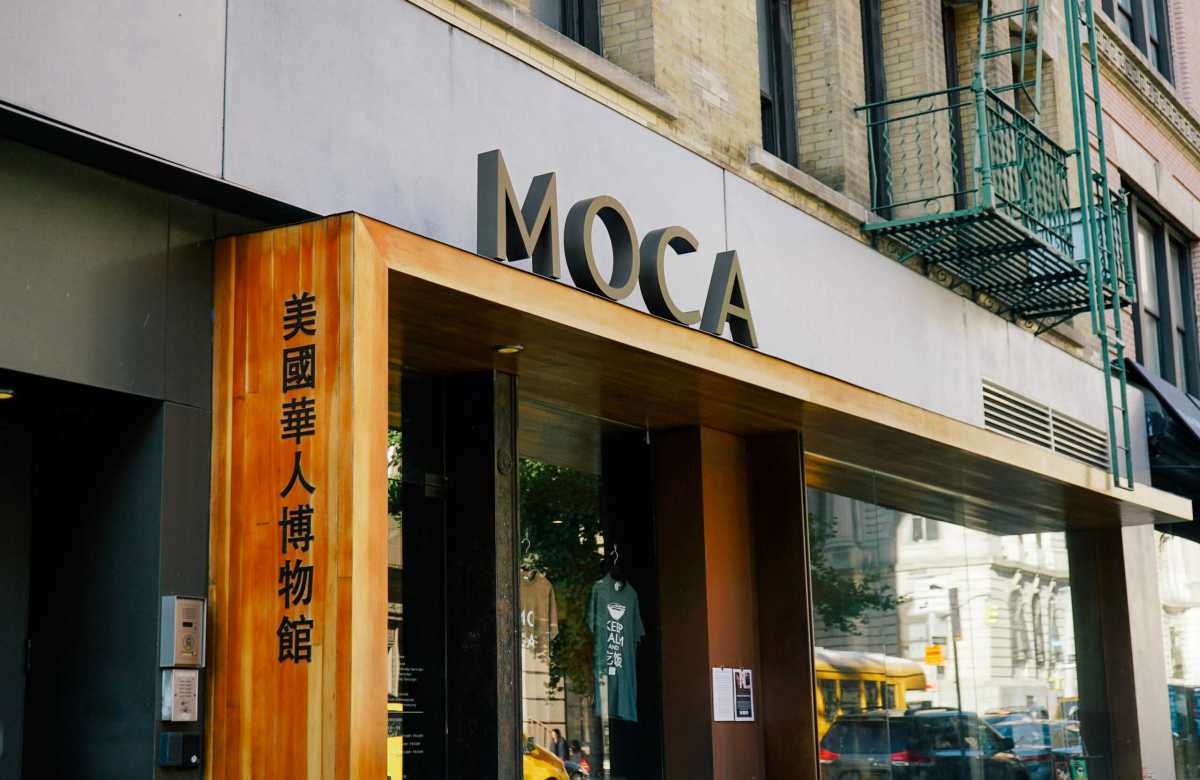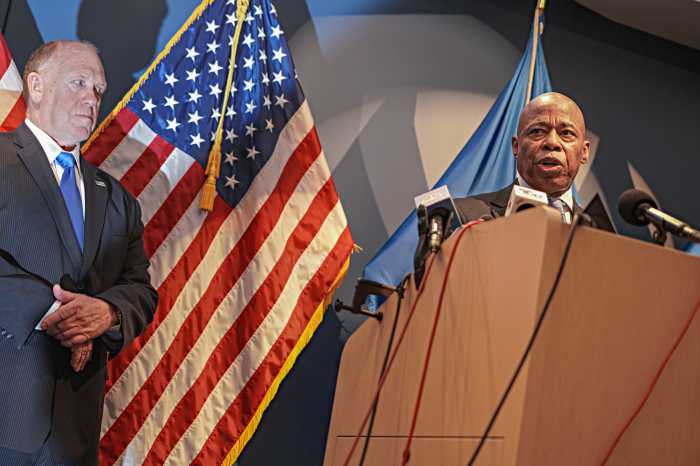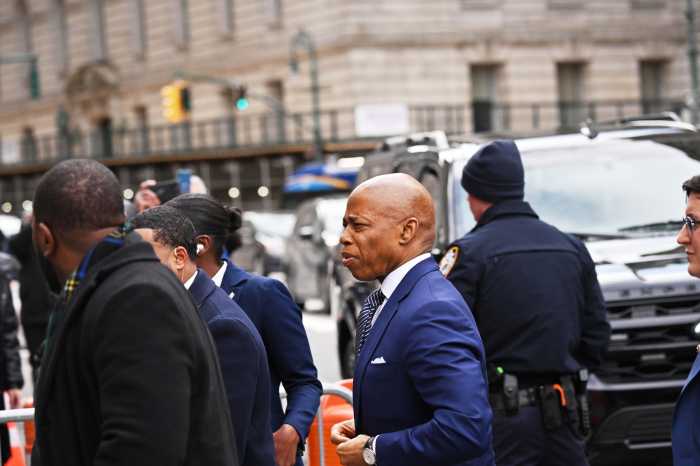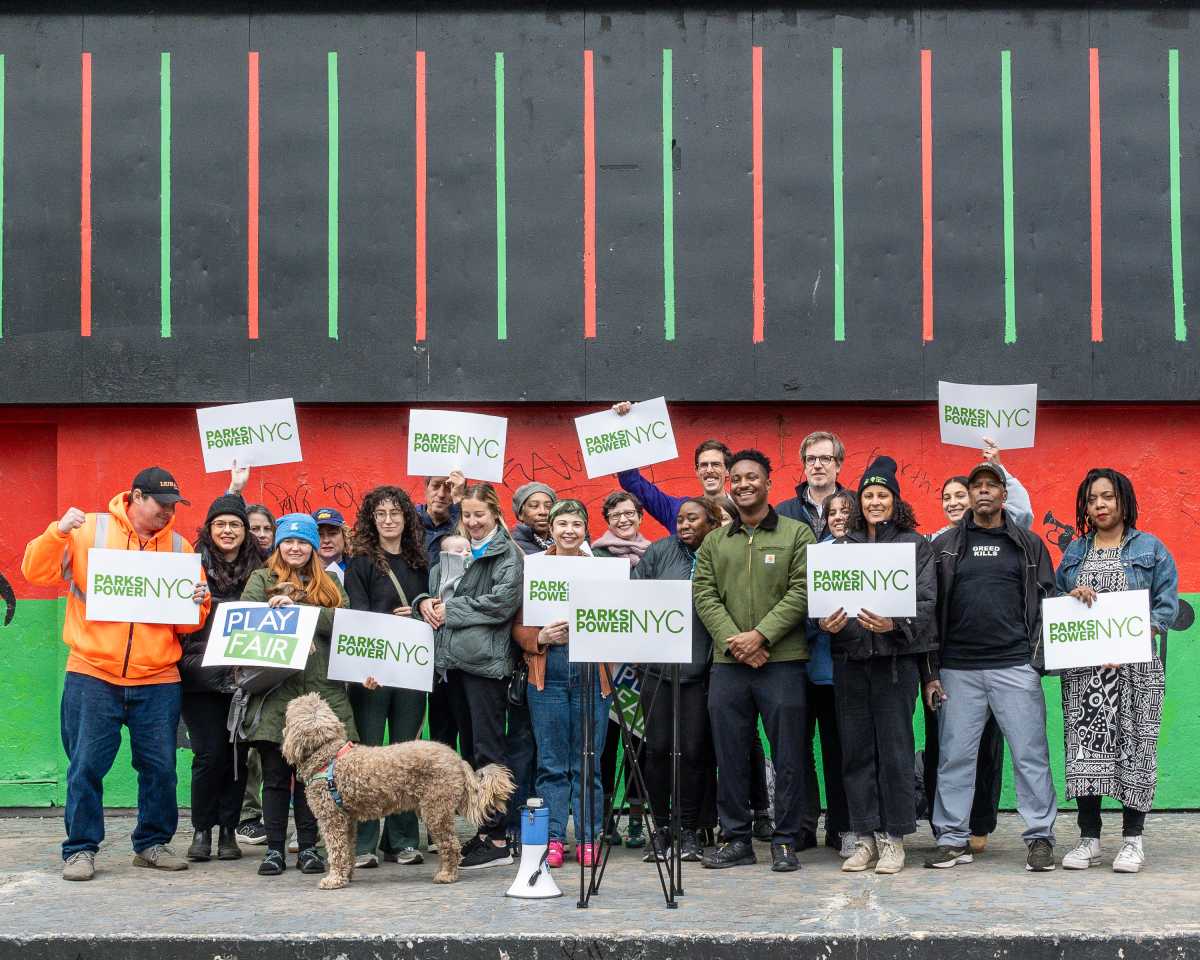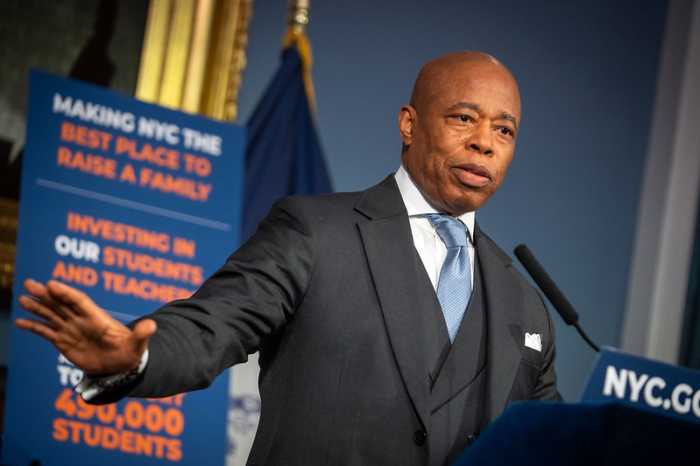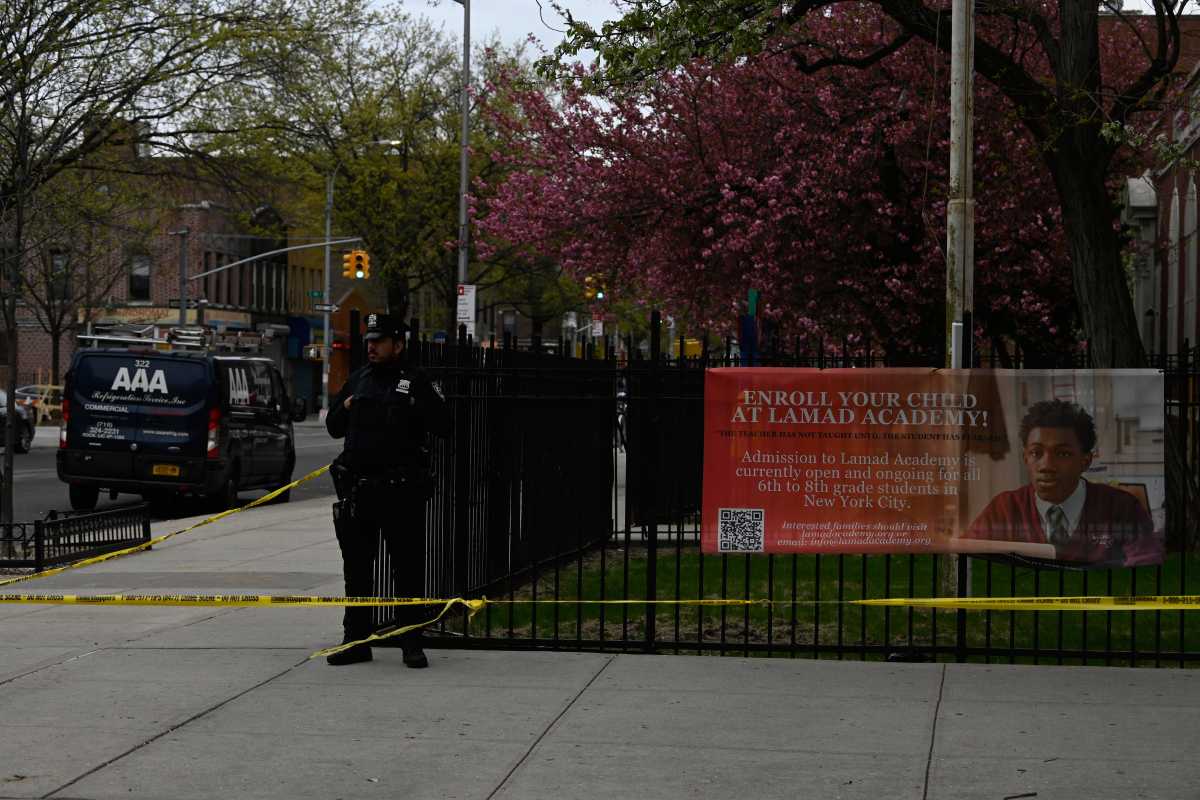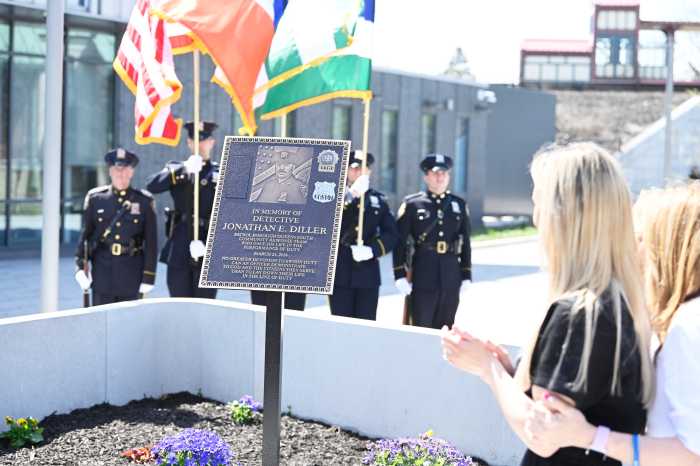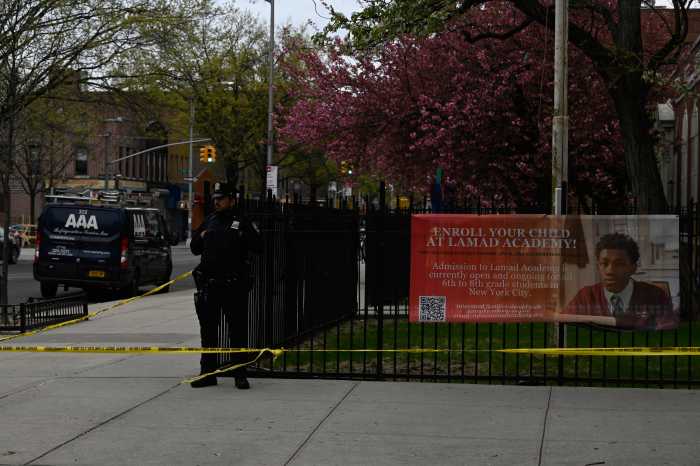After finding itself the target of allegedly false accusations in regard to funding from the city budget, a museum in Chinatown dedicated to the Asian experience in America is fighting back.
While hundreds have protesters on the streets around it’s Centre Street location in recent weeks, the Museum of Chinese in America’s (MOCA) attempt to recover from a fire has become thoroughly knotted within the politics of criminal justice reform and displacement from gentrification.
“Anti-Asian American bigotry is pervasive across the country because the history that MOCA presents is unknown to the general public. Our hardworking staff remains steadfast and passionate about MOCA’s critical work of contributing Chinese American journeys to U.S. history, and healing through education,” Nancy Yao Maasbach, president of the Museum of Chinese in America.
While a number of prominent New Yorkers such as Rockwell Chin, civil rights lawyer Elizabeth Ouyang and others are petitioning in defense of MOCA, many have found themselves wondering what a $35 million grant to MOCA from the city Department of Cultural Affairs has to do with the borough-based jail plan and the rezoning of SoHo and NoHo.
Zishun Ning, with the Coalition to Protect Chinatown and Lower East Side, is opposing the notion that Mayor Bill de Blasio can “buy off” the community to achieve the goals of the rezoning and the borough-based jail.
“Who’s going to benefit? It’s the Chu family and Jonathan Chu is co-chair on the MOCA board,” Ning said. “It’s under his watch that the $35 million deal was reached… It’s very ironic that [the borough-based jails plan] is one of the few big investments that the city is making in Lower Manhattan, not to help with the recovery but to build a new jail.”
According to Ning, Chu is a central ally in Chinatown’s supposed destruction having helped secure a community partner in the form of MOCA.
“It’s a connection, right, because Jonathan Chu is the biggest landlord in Chinatown and we see that the city is actually siding with Jonathan Chu, actively helping him with more money and the SoHo/NoHo plan,” Ning added.
Landlord’s role
Representatives of MOCA challenged the factual nature of Ning’s claims, stating that the museum is mired in a conflict that has nothing to do with the mission of the institution, having issued a fact sheet of their own.
“With displacement and gentrification occurring in nearly every neighborhood across New York City, it is not uncommon for self-serving, misguided, myopic, and self-proclaimed community activists to opportunistically produce sound bites and social media fodder through blaming community institutions that work hard to elevate their programming and upgrade their facilities and infrastructure,” the factsheet reads. “Successful fundraising efforts by MOCA to secure a permanent home after 41 years of renting space have made the museum a prime target for those activists who aggressively attempt to cast MOCA’s expansion plan as a driver of community displacement.”
Regardless of these factors in the ongoing community dispute, community organizations say the Chu family sowed the seeds for a bitter harvest when Jing Fong, the largest Chinese restaurant in Manhattan, was forced to close its doors in February and March. Alex Chu, as landlord, was the target of blame for up to 100 restaurant workers losing their jobs permanently.
“Nobody has tried harder to keep Jing Fong in this space than we have. Jing Fong’s base rent has remained the same since 1993 – and the restaurant hasn’t paid any rent for the last 12 months,” Jonathan Chu said in a statement at the time.
Among the groups protesting the closure of Jing Fong was Youth Against Displacement, which is active in the current call for the Chu family to not only the redemption of the restaurant, but have a petition calling for billions in funding going toward the jails plan to be instead invested in the community.
That includes the $35 million going to MOCA.
Chinatown’s intense opposition to the jails is almost as old as the de Blasio administration’s plan to close Rikers Island, which kicked off under former Council Speaker Melissa Mark-Viverito and a proposal that has survived the financial fallout from the COVID-19 pandemic.
The key connection between the jails and MOCA can be found in a memo from October 2019 titled the “Borough-Based Jail Plan Points of Agreement,” which outlined the use of $137 million to invest in the communities themselves as well as funding the jails. On page 16, there can be found mention of the investment in MOCA.
Defending the museum
But not all of Chinatown believes MOCA should be the target of scorn.
Rocky Chin sees MOCA as a grassroots cultural heritage museum that is necessary considering the influence of the Chinese Exclusion Act on culture in America, even in recent decades.
Archives and belongings that tell the story of immigration from China were not only easily found despite the history of the population in North American preceding the victorian era.
“During the last pandemic period and the anti-Asian violence, it’s really become clear that many Americans of all backgrounds, including Chinese, do not know this history,” Chin said. “Concessions are given by government all the time because the government feels they have to mitigate [backlash] to whatever they’re doing. So it surprised me that what was a very united Chinese community against the jail turned into this anti-MOCA thing.”
Chin has started a petition rally support behind the museum, stating that while the jail plan is not supported by him and like-minded supporters, the funding for MOCA is critical to telling the story of Chinese immigration and fending off anti-Asian violence.
“The team at MOCA is so appreciative of the broad outpouring of support we’ve recently received, including longtime community builders, activists, supporters, and national Asian-American leaders. These advocates understand just how critical the Museum’s role is, both at inception and at this particular moment,” Maasbach said.
Chin is skeptical that Chu’s role in the museum and as wealthy realtors is as significant as detractors believe.
“The museum has no power to stop the mayor’s decision on the jail. You would think that if you’re protesting against the jail, you would protest against the mayor or the city council person. But why protest against this struggling cultural institution,” Chin continued. “I don’t think it’s fair for the museum to be caught up in the very complicated jail politics that are going on right now.”
Alice Hom, principal of P.S. 124, told amNewYork Metro that the museum’s central role in the friction between community member is sad considering MOCA as a destination for students to learn about the struggles of Asian Americans.
As the museum grapples with securing their new location with an annual cost of $600,000, some members of the community have their own criticism of the protests which they believe is misdirected at an institution dedicated to telling the long history of Chinese immigration to the United States.
Not only has MOCA been looking for funding from the city since 2015 – predating the conception of the plan to replace the jails on Rikers Island with four separate detention facilities in Manhattan, Queens, Brooklyn and the Bronx – it stymies their efforts to recover from a devastating fire that shook their location across from Columbus Park just prior to the outbreak of the COVID-19 pandemic.
Read more: NYPD Discusses Middle East Counterterrorism



